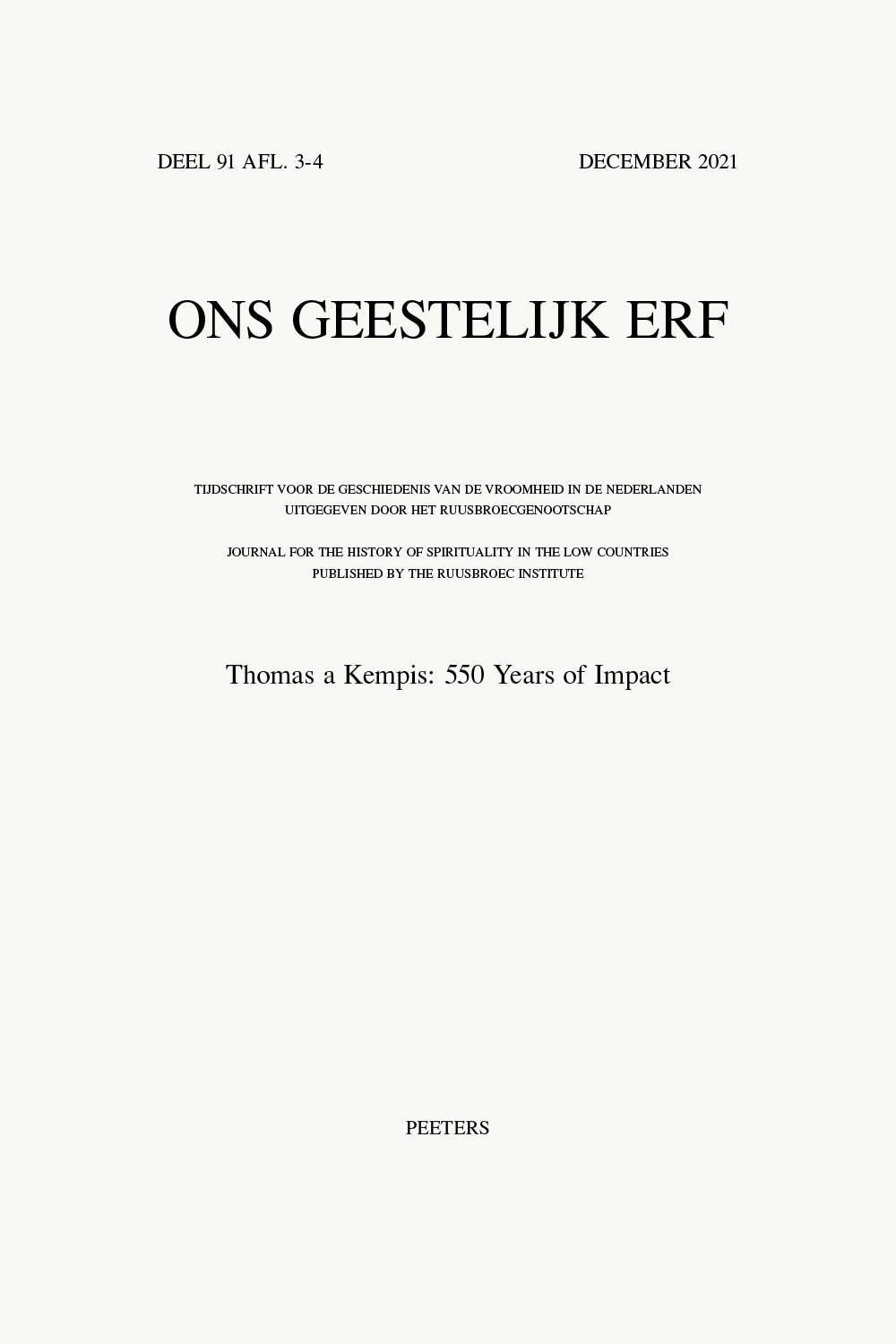 previous article in this issue previous article in this issue | next article in this issue  |

Preview first page |
Document Details : Title: Adapting Saints Subtitle: Memory, Imagination, and the Liturgy of St Agnes of Rome in the Diepenveen Sister-Book Author(s): PERK, Godelinde Gertrude Journal: Ons Geestelijk Erf Volume: 94 Issue: 1-3 Date: 2024 Pages: 183-215 DOI: 10.2143/OGE.94.1.3293967 Abstract : In a contemplative exercise and a vision in the late-medieval Diepenveen sister-book (a compilation of sisters’ lives), both imagining the community being wedded to Christ, a thirteen-year-old teenage martyr is an honoured wedding guest: echoes of the liturgy of St Agnes of Rome punctuate the text. However, a disturbingly similar nuptial register marks the sister-book’s account of local loss of life during a plague epidemic, likewise figured as a marriage feast. This essay scrutinizes the problematics of such communal reimagining of a virgin martyr’s violent death. Critics postulate that the Devotio Moderna sister-books interrogate the gendered tropes of female saints’ legends and bolster the community through visionary autohagiography animated by communal memory. Scholarship on imagination and memory, moreover, posits that these faculties mediate between contemplation of Christ’s humanity and his divinity and between individual and collective devotion, allowing Christ to participate in the corporate life of religious communities. Saints’ capacity to inflect and refract communal identity through memory remains underexamined, however. Juxtaposing the sister-book with the Office of St Agnes celebrated in the convent, this discussion charts how the text joins liturgical, textual, and narrative memory images into mnemonic chains. These liturgical echoes serve to reconfigure the gendered pathway from suffering to mystical or wedded bliss: the text substitutes memorial labour performed by the body politic for the physical violence inflicted upon Agnes’s body. In this manner, the text negotiates Devotio Moderna distrust of visions, but also transmits several gendered fracture points from the Agnes tradition that threaten the corporate body. By approaching memory and imagination through a collectively produced, female-authored text, this essay weaves Low Countries holy women into a European tissue of imagination practices. It unveils how medieval religious texts composed by female communities harness the legends of women from centuries past for present-day aims. Memory and imagination are shown to both produce and contain visionary imitation of Agnes, condemning to the same degree as these faculties redeem. |
|


